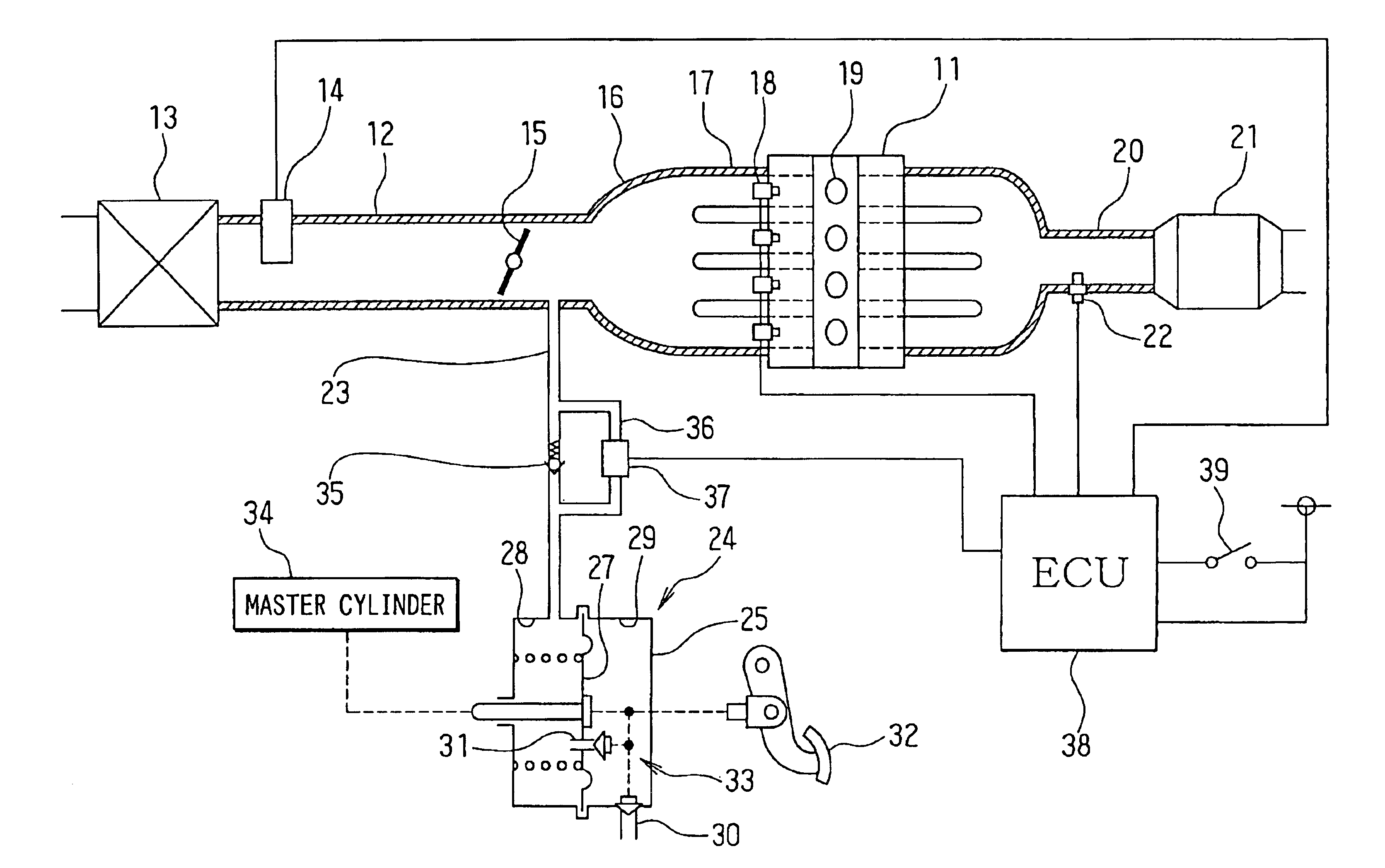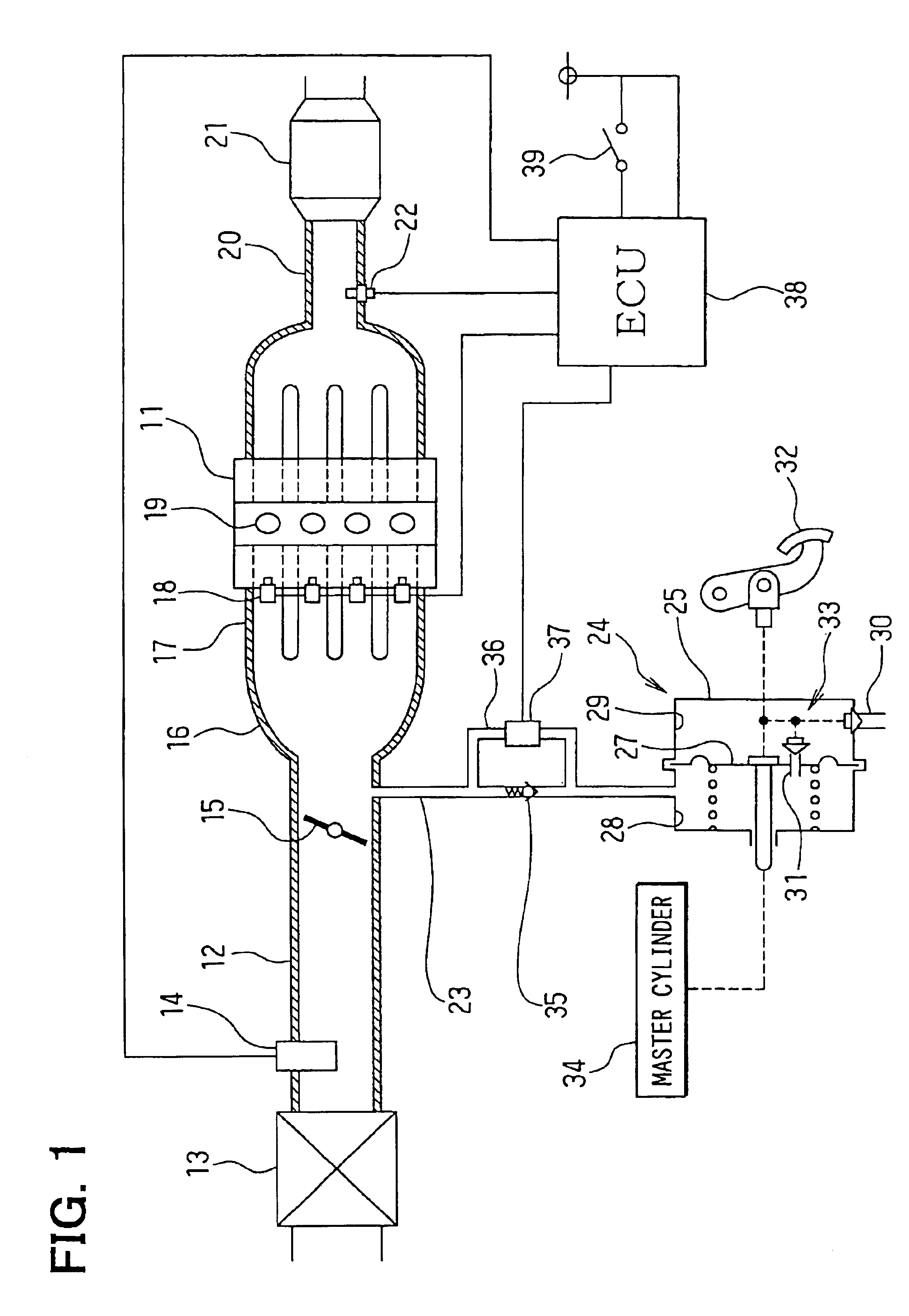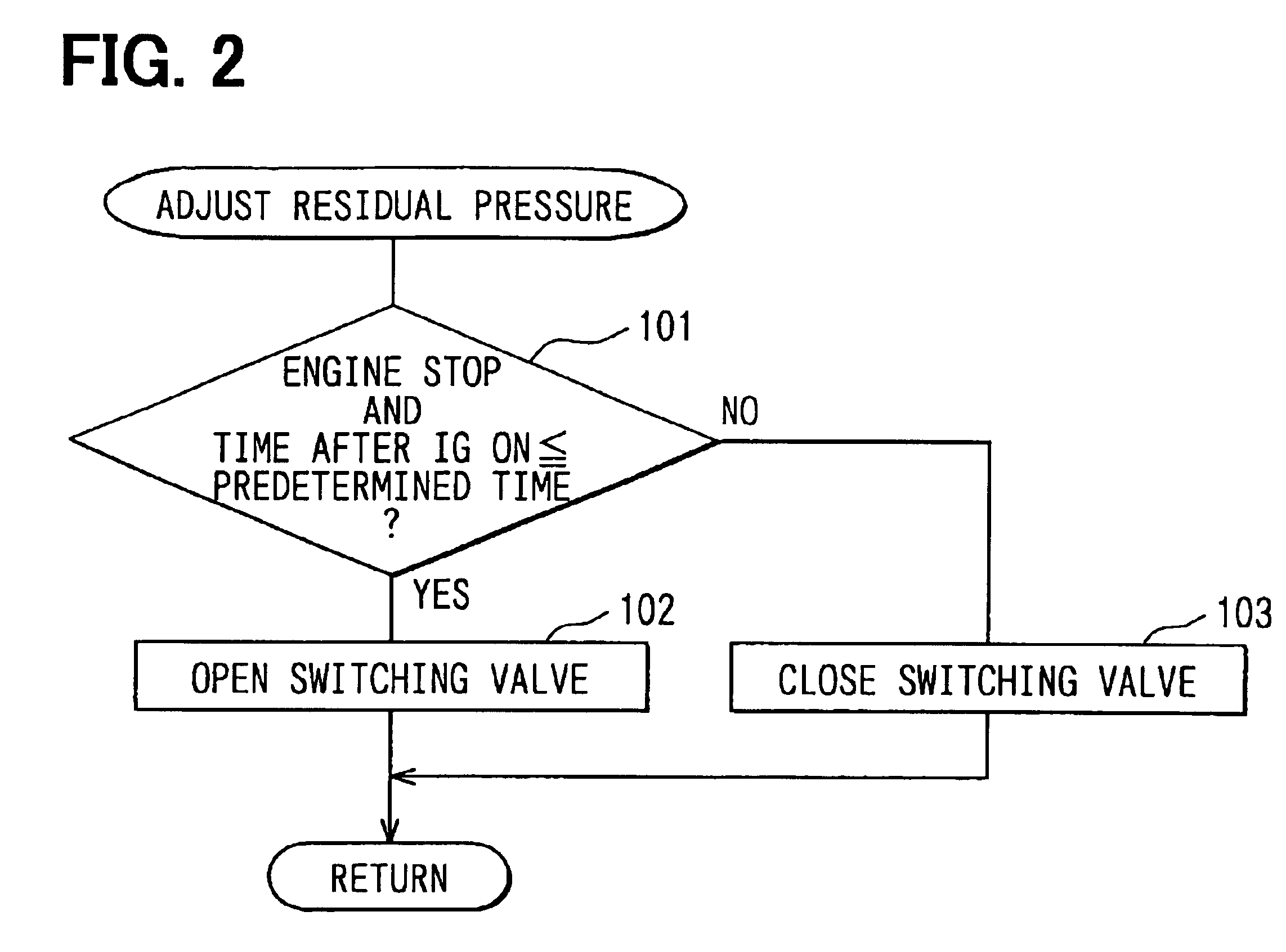Control system for internal combustion engine
a control system and internal combustion engine technology, applied in the direction of electric control, engine starters, braking systems, etc., can solve the problems of adversely affecting the drivability or exhaust emissions, airflow to be sucked, and not detected by the airflow meter, so as to reduce the amount of airflow flowing, suppress the dispersions in the starting condition and the emissions, and reduce the residual pressure
- Summary
- Abstract
- Description
- Claims
- Application Information
AI Technical Summary
Benefits of technology
Problems solved by technology
Method used
Image
Examples
first embodiment
(First Embodiment)
Referring to FIG. 1 and FIG. 2, a first embodiment of the invention is described herein after. FIG. 1 shows a schematic construction of an engine control system. At the most upstream of an intake pipe 12 of an internal combustion engine or an engine 11, an air cleaner 13 is disposed, downstream of which an airflow meter 14 is disposed for detecting an intake airflow. Downstream of the airflow meter 14, a throttle valve 15 is disposed, an opening of which is controlled by a DC motor or the like.
A surge tank 16 is disposed downstream of the throttle valve 15, which is provided with an intake manifold 17 for introducing the air into the individual cylinders of the engine 11. To the vicinities of the intake ports of the intake manifold 17 for the individual cylinders, fuel injection valves 18 are disposed individually. Ignition plugs 19 are provided in the cylinder head for the individual cylinders so that the air / fuel mixtures in the cylinders are ignited with the spa...
second embodiment
(Second Embodiment)
The switching valve 37 is disposed in the bypass passage 36 in the first embodiment. In second embodiment shown in FIG. 3, an orifice 40 is provided in place of the switching valve 37 in the bypass passage 36. The orifice 40 has a far smaller passage diameter than that of the remaining portion of the bypass passage 36. As a result, the airflow through the bypass passage 36 can be reduced to such a low rate as can be ignored while the engine is running. A bake booster residual pressure adjusting means is comprised of bypass passage 36 and orifice 40. The remaining system constructions are identical to those of the first embodiment.
The orifice 40 is disposed in the bypass passage 36. Therefore, the air in the intake pipe 12 can be gradually introduced into the brake booster 24 through the orifice 40 during the engine stop so that the residual pressure of the brake booster 24 can be set substantially to the atmospheric pressure (i.e., the pressure equal to the intake...
third embodiment
(Third Embodiment)
A third embodiment of the invention will be described with reference to FIG. 4 and FIG. 5. In the third embodiment as shown in Fig. a pressure sensor 41 (i.e., suction airflow information detecting means) is disposed between the check valve 35 and the brake booster 24 in the vacuum introducing passage 23. The pressure (corresponding to the residual pressure of the brake booster 24) in the vacuum introducing passage 23 is detected by that pressure sensor 41 thereby to detect the information on the airflow to be sucked from the brake booster 24 into the intake pipe 12 at the starting time. The remaining system constructions are identical to those of the first embodiment.
In the third embodiment, moreover, the starting time fuel injection rate setting program shown in FIG. 5 is executed. At the engine starting time, the airflow Q1 to be sucked from the brake booster 24 into the intake pipe 12 is calculated on the basis of the pressure (corresponding to the residual pre...
PUM
 Login to View More
Login to View More Abstract
Description
Claims
Application Information
 Login to View More
Login to View More - R&D
- Intellectual Property
- Life Sciences
- Materials
- Tech Scout
- Unparalleled Data Quality
- Higher Quality Content
- 60% Fewer Hallucinations
Browse by: Latest US Patents, China's latest patents, Technical Efficacy Thesaurus, Application Domain, Technology Topic, Popular Technical Reports.
© 2025 PatSnap. All rights reserved.Legal|Privacy policy|Modern Slavery Act Transparency Statement|Sitemap|About US| Contact US: help@patsnap.com



